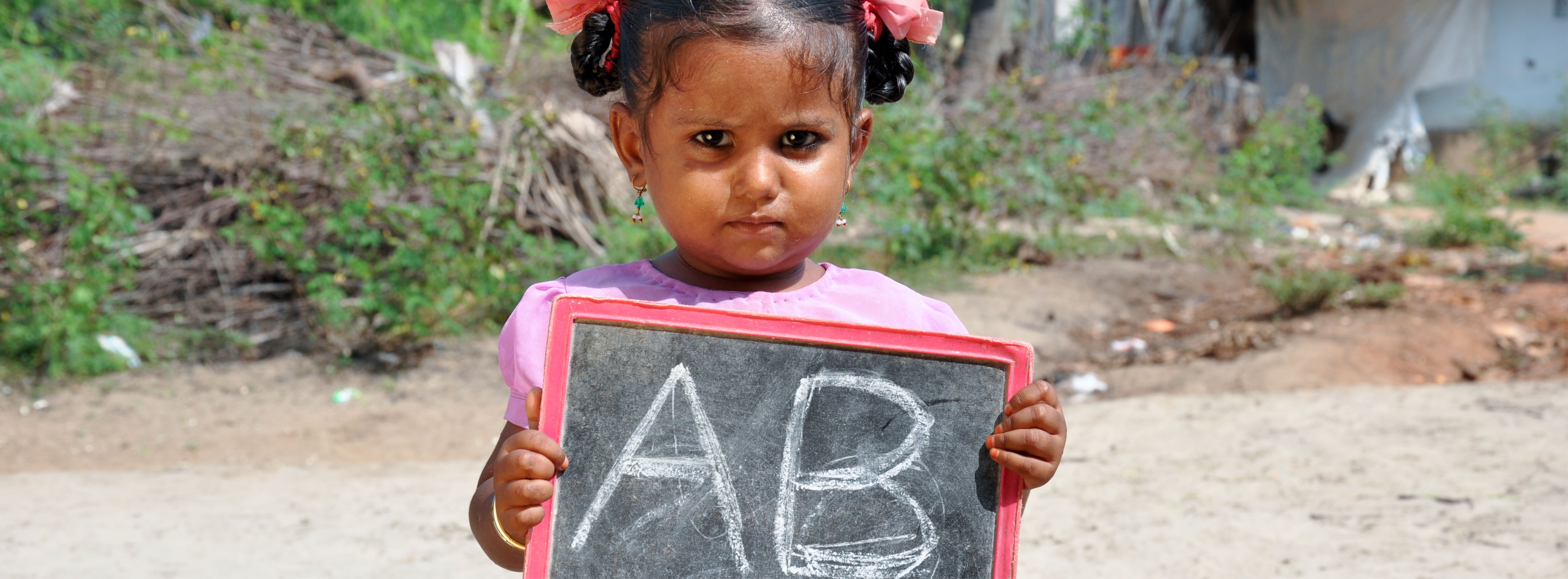In rural India, girls often face many challenges that stop them from getting the education they deserve. Whether it’s because of social, economic, or cultural obstacles, many girls are kept away from school and denied the chance to grow, learn, and shape their futures. This problem is an important part of the larger issue of rural education in India. When girls miss out on education, it not only harms them but also affects their families, communities, and even the economy. Empowering girls through education is one of the strongest ways to break the cycle of poverty and gender inequality in rural areas.
Let’s take a closer look at the current state of girl child education in rural India, the challenges these girls face, and how education can help build a better and more equal future for everyone.
The Current State of Girl Child Education in Rural India
Education in rural areas in India is still a big challenge, especially for girls. In rural India, girls often face significant barriers to education. While the government has made efforts to improve education for all, many girls still lack access to schooling. Some of the main reasons for this are long distances to schools, lack of proper facilities, early marriage, and societal norms that value boys’ education more than girls’. Even when schools are available, many girls are forced to drop out early because of these challenges.
The statistics make the problem clear: According to the National Statistical Office (NSO), the literacy rate for women in rural areas is much lower than that for men. While progress has been made over the years, the gap continues, especially in remote villages where educational resources are very limited.
The Problems Facing Girls in Education
One of the key reasons girls in rural India are kept out of schools in rural areas is early marriage. In many rural communities, girls are married off at a young age, often before they even finish school. This limits their opportunities and traps them in cycles of poverty and inequality.
In addition to early marriage, girls are often victims of gender-based violence, which includes harassment, discrimination, and even abuse in schools. These unsafe environments discourage families from sending their daughters to school, leading to higher dropout rates.
Another major issue is the traditional belief that boys should be educated while girls should focus on household duties. In rural India, the preference for boys' education is deeply ingrained in societal norms. This means that girls often receive less encouragement and fewer chances to study, putting them at a disadvantage right from the start.
Why is Girl Child Education Important?
Educating girls has far-reaching benefits, not just for the girls themselves but also for their families, communities, and society at large. When girls are educated, they are more likely to delay marriage, have fewer children, and lead healthier lives.
Educated women are better able to support their families and contribute to the economy. Studies have shown that for every year a girl stays in school, her income potential increases significantly, which in turn helps lift entire communities out of poverty.
In addition to these personal and economic benefits, educating girls helps to break down gender inequality. It empowers girls to make decisions about their lives and their futures. It challenges traditional roles and allows women to play an equal part in shaping their society and economy.
Barriers to Education: Social, Economic, and Cultural Obstacles
There are multiple layers of obstacles that prevent girls in rural India from accessing education. These barriers can be social, economic, or cultural, and they need to be addressed in a comprehensive way.
Social Barriers
In many rural areas, girls face social pressures that keep them at home. There is often a strong cultural belief that a girl's place is in the home, not in the classroom. Families may prioritize boys' education over girls' because they believe that boys are the future breadwinners.
Additionally, societal attitudes toward girls' education can make it difficult for girls to pursue their studies. There may be widespread discrimination in schools, where girls are treated as second-class students, or where teachers may unconsciously favor boys.
Economic Barriers
Poor education in rural areas is often linked to financial struggles faced by families. Many rural families cannot afford to send their children to school. Even though the government provides free education, the costs of uniforms, books, and transportation can still be a burden. In many cases, families may choose to send their sons to school instead of their daughters, believing that boys’ education is more important.
For girls, there are also additional economic pressures. Many girls are expected to help with household chores or work on the family farm, which takes time away from their studies. In some families, girls are even expected to work outside the home to help support the family, making it harder for them to continue their education.
Cultural Barriers
In some rural communities, cultural practices such as child marriage or restrictions on mobility keep girls from attending school. For example, in certain regions, families may not want their daughters to travel long distances to attend school, fearing for their safety or reputation. These cultural norms can be very difficult to change and require a concerted effort at the community level.
The Role of Government Initiatives and Policies
The Indian government has launched several initiatives to address the issue of girl child education. These include schemes such as Beti Bachao Beti Padhao, which aims to protect girls from gender-based violence and encourage their education, and the Mid-Day Meal Scheme, which provides free meals to children in schools to encourage attendance, particularly for girls from economically disadvantaged families.
Other initiatives, like the Swachh Bharat Abhiyan, which aims to build sanitation facilities in schools, directly address some of the barriers that prevent girls from attending school. Having separate toilets for girls, for example, is crucial in rural areas where the lack of facilities can keep girls from attending school, particularly once they reach puberty.
The Road Ahead
While these initiatives are a step in the right direction, they are not enough on their own. There needs to be a greater focus on improving the quality of education, not just the quantity. Programs need to be implemented more effectively at the grassroots level, and monitoring systems need to be put in place to ensure that girls are not only enrolled in school but also complete their education.
Furthermore, there must be a national push for gender equality in education. This means changing societal attitudes towards girls’ education, ensuring equal opportunities for girls, and creating safer and more supportive environments for them.
The Importance of Community Involvement in Promoting Education
For any initiative to succeed, the community must be involved. In rural India, local communities play a vital role in promoting girl child education. Families, village leaders, and local NGOs must come together to encourage the education of girls.
Care India Welfare Trust: Welfare Support for Girls' Education
Care India Welfare Trust has been a key player in advocating for and supporting girl child education in rural India. Through its various initiatives, Care India Welfare Trust works to empower marginalized communities, particularly in rural areas, by providing access to education and promoting gender equality.
Care India Welfare Trust’s programs not only focus on providing education but also work on changing social norms that hinder girls’ progress. By collaborating with local communities, Care India Welfare Trust ensures that girls have the support they need to attend school and continue their education. This approach has helped thousands of girls break free from societal constraints and build a better future for themselves.
The Power of Digital Learning in Rural Areas
Digital education is proving to be a game-changer for many girls in rural India. With the rise of e-learning platforms, mobile apps, and digital classrooms, education is now more accessible than ever before.
In remote areas, where schools are often far away, digital learning offers an opportunity for girls to continue their studies from home. Mobile phones, which are becoming increasingly common even in rural areas, can be used to access online classes and educational resources. This technology can help bridge the gap and provide girls with the tools they need to succeed.
Success Stories: Empowering Girls Through Education
There are countless stories of girls from rural India who have overcome tremendous odds to receive an education and change their lives. For example, Suman, a young girl from a village in Bihar, was forced to drop out of school at the age of 12 due to financial constraints. But through the support of local NGOs and government initiatives, she was able to return to school and complete her education. Today, Suman is an advocate for girls' education in her community, encouraging other girls to pursue their dreams.
These success stories show that, with the right support, girls in rural India can achieve anything.
The Impact of Educating Girls on Society and the Economy
Educating girls has a ripple effect that goes beyond the individual. When girls are educated, they are more likely to marry later, have fewer children, and ensure that their children—especially their daughters—receive an education too. This creates a cycle of empowerment that benefits entire communities.
In the long run, educated girls become women who contribute to the economy, support their families, and become leaders in their communities.
Challenges Ahead: What Still Needs to Be Done
Despite the progress that has been made, many challenges remain. Gender bias in education, inadequate facilities, and cultural barriers continue to keep girls out of school. More needs to be done to address these issues and ensure that every girl, no matter where she lives, has the opportunity to receive an education.
Steps Toward Solving the Problem
The key to solving this problem lies in collaboration. Local communities, the government, NGOs like Care India Welfare Trust, and the private sector must all come together to ensure that girls have access to education. Practical steps include providing scholarships, improving school infrastructure, ensuring safety, and creating awareness about the importance of girls' education.
How You Can Help: Ways to Support Girl Child Education in Rural India
You can make a difference! Here are some ways you can support girl child education in rural India:
- Donate to organizations like Care India Welfare Trust that are actively working to improve girls' education in rural areas.
- Volunteer with local NGOs to help provide educational resources and support to girls in need.
"Help Empower a Girl, Change a Future!"
Your donation can make a real difference in the life of a girl in rural India. Education is the key to breaking the cycle of poverty and empowering girls to build better futures for themselves, their families, and their communities.
With just a small contribution, you can help provide access to quality education, essential learning materials, safe school facilities, and a chance at a brighter future.
Join us in this cause. Donate today and be a part of empowering the next generation of women leaders!
Every little bit counts—together, we can make education accessible for every girl, no matter where she lives.

